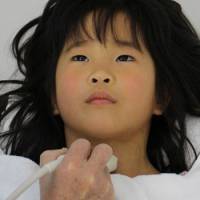Too much of the conversation on the Fukushima No.1 nuclear accident is driven by ideologues — sensationalist bloggers predicting the extermination of mankind on the one hand and, on the other, nuclear industry shills insisting plutonium inhalation is just like eating bananas — when what is really needed is good, solid reporting of the facts on the ground.
"A2-B-C" is a documentary that provides exactly that, an up-close look at the "Potemkin Village" decontamination efforts in Fukushima, and the concerns facing families trying to raise children in a still highly radioactive environment. We see a school's playground and the field next to it, which gets a Geiger counter reading of 35.37 microsieverts per hour. We meet the Date city official who describes the government manual that prohibits taking official radiation level readings near sewers, gutters or any other likely hot spots. We meet the schoolchildren who talk about their "glass badges" (dosimeters), only half-comprehending the nature of this invisible threat.
"A2-B-C" is not a good primer, since it provides almost no background or context to the situation, but it clearly demonstrates that contrary to Prime Minister Shinzo Abe's weaselly claims, all is not under control.
“A2-B-C” is showing at Theatre Pole-Pole (http://www.mmjp.or.jp/pole2/) in Higashi-Nakano from May 10. Director Ian Thomas Ash will be at the 7 p.m. screening on the opening day, to talk about relationship between media and documentary film.
| Rating | |
|---|---|
| Director | Ian Thomas Ash |
| Language | Japanese (subtitled in English) |
| Opens | Opens May 10, 2014 |



